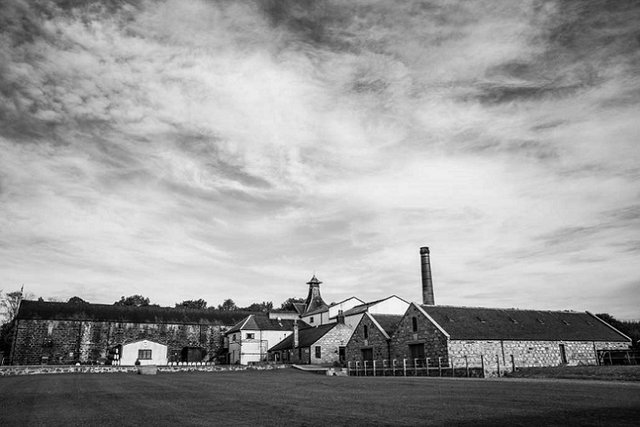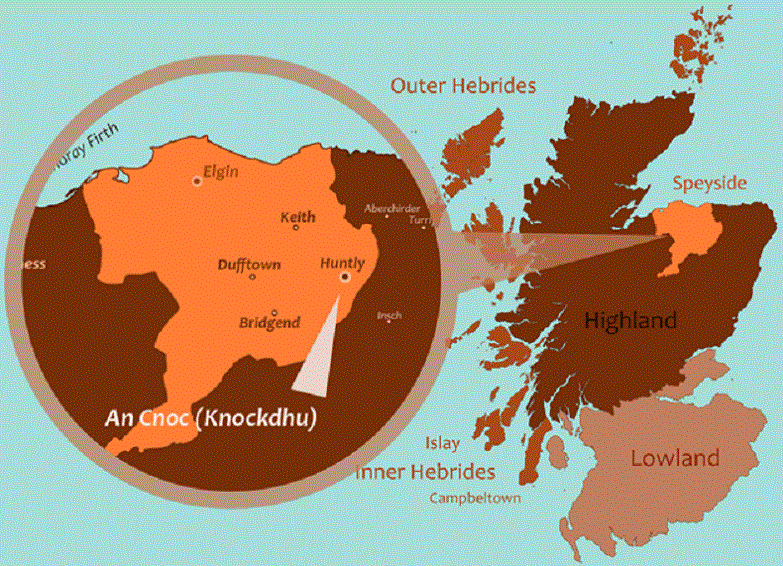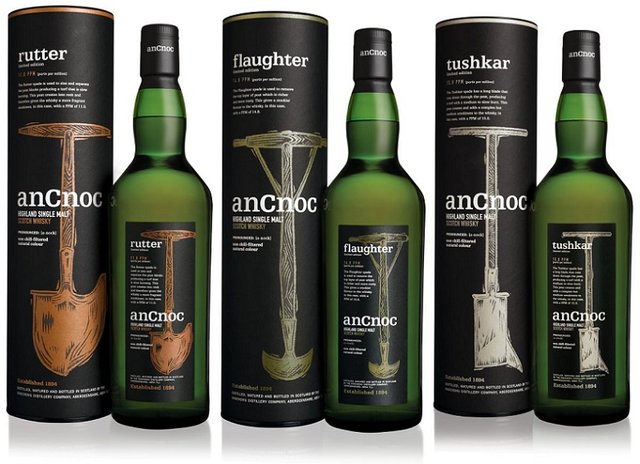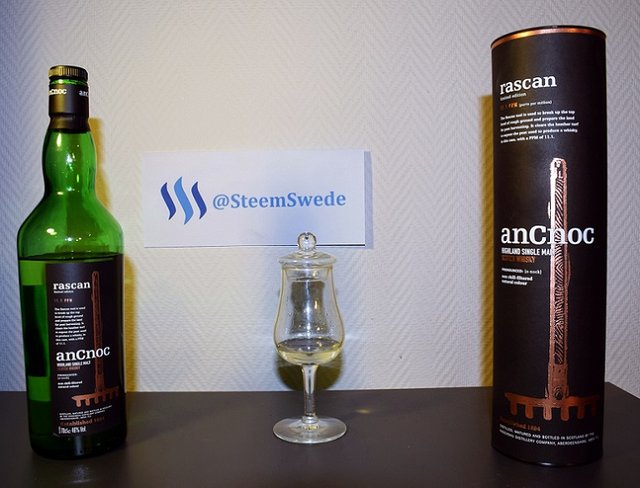[WHISKY REVIEW] anCnoc Rascan - Anyone for smoked fruit compote? 💧
Today I thought I'd take you to the Scottish highlands, just south of Banff in the village of Knock to be precise. I'm talking about the esteemed Knockdhu distillery. The whisky they produce is however currently known as anCnoc, which should be pronounced [a•nock]. They changed the name in the 90's in order to avoid confusion with the Knockando distillery. Do I sniff peat smoke? What? In the highlands, this far away from Islay?

The Knockdhu Distillery was founded by John Morrison already in 1894. The surrounding lands were full of peat and the barley grew strong in the nearby fields. Today it's owned by Inver House Distillers, which also owns Old Pulteney and Balblair. Slightly over a quarter of the production is made from peated malt and alot of it is sold to the blending industry. The absolute majority of the whisky is put in bourbon barrels, and 15% of production is filled in sherry butt's.

anCnoc is famous for their elegant, fruity, honey sweet and 'citrusy' whisky, however in 2014 they launched a series of peat smoked whisky. The first three, all named after the traditional tools used when cutting and separating the peat, where Rutter, Flaughter and Tushkar. These tools also decorate the beautiful bottle designs in the series. In 2015 they released the Rascan edition, which is the one we will be tasting today.

A rascan is a kind of rake you use to scrape off the top layer of the heather and other plants to gain access to the peat. With a phenol level of 11.1 ppm the whisky delivers a rich but elegant smokiness, which might be perfect for noobs in smoky whisky. It's a whisky without age statement (NAS), but for nearly a decade, I assume, anCnoc Rascan has slumbered in American white oak ex-bourbon barrels. To read more about peat smoke and phenols see this review.

anCnoc Rascan
ABV: 46%
Age: NAS
Phenol level: 11.1 ppm
Region: Highlands (some say Speyside, but it's right on the border)
Uncolored (hence the pale color) & non-chill filtered 👍
Price: Around 65 dollars
🐽 Nose: To my surprise, the first fragrance that hits me is not smoke, but damp cellar and decomposing bio-mass in the autumn. Then leather and tobacco, but behind these earthy tones there's also the sweetness of vanilla, milk chocolate and ripe apples. Slightly floral as well, and a tart tone of orange / lemon marmalade. Of course there is smoke, but it's not overwhelming, rather elegant like a high-quality lapsang tea. Reminds me of some of the Isle of Jura whisky's.
👅 Palate: The taste initially delivers a heavier smoke punch than the nose. However, it diminishes quickly and allows fruit, honey and barrel tones that breathe luscious bourbon vanilla and caramel to come out. The leather and sweet tobacco from the nose is also there, much more pronounced than the smoke actually. It's like a fruit desert surrounded by a light mist of smoke.
🏁 Finish: It's an exceptionally smooth malt, despite its 46%, and it's only in the relatively short aftertaste with fruity undertones that a warming alcohol makes itself known. The floral notes waves you goodbye and it all elegantly ends with a puff of smoke.
💡 Conclusion: A very enjoyable peat smoked whisky. The smoke never takes the upper hand, but is only a complement to the fruity flavors of the distillery's own style. A serious contender to the Islay whisky's? If I have one complaint it would be the short finish. A final score of 88 it is.
If you have any whisky related questions don't be afraid of asking! I'll do my best to answer them. Cheers, or as they say in Scotland: Sláinte!
Image sources:
www.bmiregional.com
ancnoc.co.uk
www.bevnet.com
Never seen this kind of whisky anywhere, how is it compared to Chivas Regal?
The main difference between a blended whisky like Chivas (or Johnny Walker, Grants, Famous Grouse, Ballentines etc), and a single malt, is that the blended normally consist of 60% grain whisky. Grain whisky is made from other grains than barley - such as rye, wheat, oats - and they use so-called column stills in the distilling process, which can handle large amounts of alcohol at a low cost. Grain whisky is made in large batches and matures quickly, which allows you to produce about 40 million liters per year, compared to 2-3 million liters for a single malt distillery. So in a blended you mix this non-barley grain whisky with several different single malts (sometimes up to 30 different), while a single malt only consist of one spirit from one single destillery and is only allowed to be made from barley malt, water and yeast, and has to mature on oak casks for at least 3 years. If I had to answer which is the finer art of blended and single malt, I had to answer single malt - especially compared to the big brand blends. There are however some very interesting smaller artisan blender companies out there today, that are pretty amazing. Such are "Compass Box" and "That Boutique-y Whisky Company".
Wow, thank you very much!
Definitely my bad to compare single malt with blended whisky :D
Looking forward to more reviews from you!
Lovely. Thank you for bringing a bit of Scotland to Steemit. Cheers.
Skoal :-)
Skål!
Nice post! I am not a whisky drinker but my brother is... thanks for sharing!
Härligt att hitta en svensk steemer :)
Dito! :)
Oh! I've never heard of this one. Very excited to try it. Is it available in the states? I am very intrigued. Also, thank you for being another Scotch lover on Steemit. :)